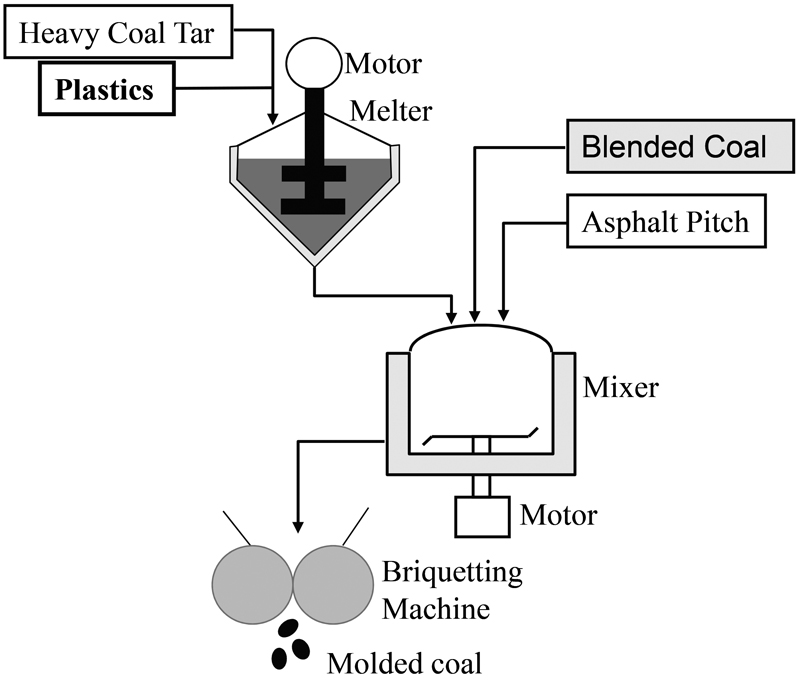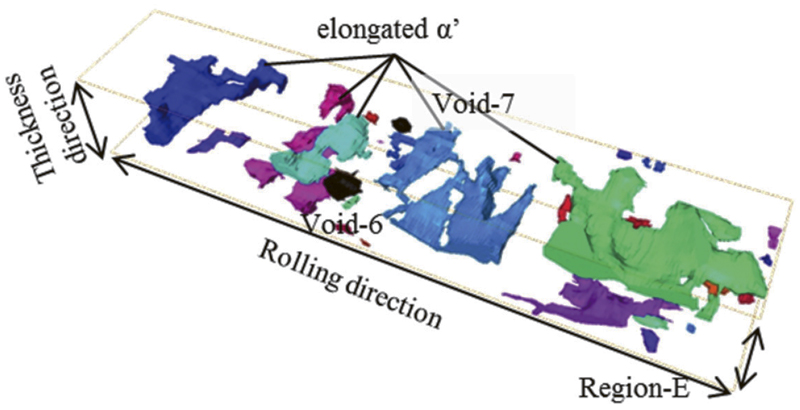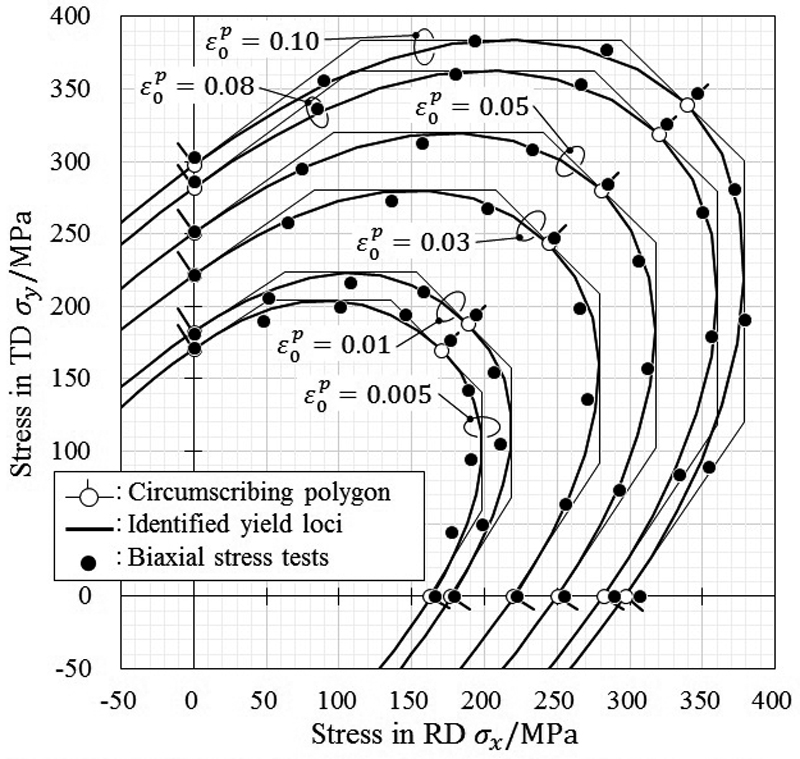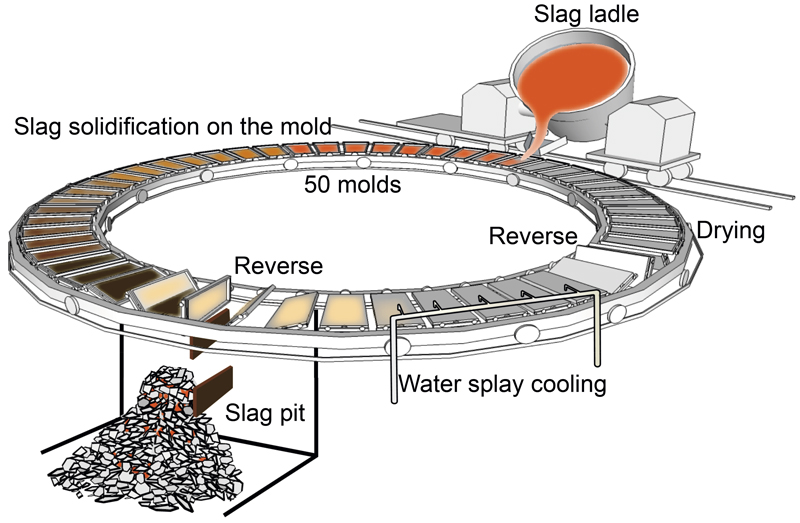
- |<
- <
- 1
- >
- >|
-
2020 年 106 巻 5 号 p. Cover-
発行日: 2020/05/01
公開日: 2020/04/30
ジャーナル オープンアクセスPDF形式でダウンロード (658K) -
2020 年 106 巻 5 号 p. Contents-
発行日: 2020/05/01
公開日: 2020/04/30
ジャーナル オープンアクセスPDF形式でダウンロード (1750K) -
2020 年 106 巻 5 号 p. Editorial-
発行日: 2020/05/01
公開日: 2020/04/30
ジャーナル オープンアクセスPDF形式でダウンロード (226K)
-
石井 純, 浅沼 稔, 村井 亮太, 鷲見 郁宏2020 年 106 巻 5 号 p. 235-243
発行日: 2020年
公開日: 2020/04/30
ジャーナル オープンアクセス HTMLMolded coal charging process into coke oven has been used to improve coal charging density. Molded coal charging process can improve coke strength even if the rank of blended coal is low. However, the molded coal is quite expensive because the cost of coal tar binder is high. Thus, we developed a new process that could reduce the amount of tar binder by utilizing used plastics. In this new process, used plastics were charged into heavy tar and dissolved at 200ºC. The resulting binder with plastics could improve the strength of the molded coal, thus, coke was prepared experimentally using molded coal with the new binder.
The drum strength of the molded coal with plastics binder was better than that of coke using conventional molded coke with heavy tar binder.
Used plastics for the binder could reduce CO2 emissions from coke ovens. This new process is one of the suitable ways of recycling used plastics in steel works.
 抄録全体を表示PDF形式でダウンロード (1664K) HTML形式で全画面表示
抄録全体を表示PDF形式でダウンロード (1664K) HTML形式で全画面表示
-
菊月 まゆ子, 林 宏太郎, 常見 祐介, 藪 翔平, 松野 崇2020 年 106 巻 5 号 p. 244-253
発行日: 2020年
公開日: 2020/04/30
ジャーナル オープンアクセス HTMLThis research centers on elucidating the relationship between void nucleation sites and the morphology/distribution of the surrounding phase in dual-phase steel during the initial stages of ductile fracture. Characteristic features of voids and surrounding ferrite/martensite grains were observed through a three-dimensional (3D) optical microscope analysis with the aid of serial sectioning. The characterized 3D distribution and morphology of ferrite/martensite surrounding the voids were set as an input for a finite flement (FE) simulation to obtain the hydrostatic pressure and equivalent plastic strain in the ferrite and martensite phases during tensile deformation. Experimental results showed that some of the voids present in the ferrites were surrounded by the flat-shaped martensites, which were elongated along both rolling direction (RD) and transversal direction (TD). These flat-shaped martensites were existed along the tensile direction. The FE simulation showed that the ferrite grains sandwiched between the harder martensites are more susceptible to void nucleation; this is due to the concentration of equivalent plastic strain and hydrostatic pressure in the ferrites during tensile deformation.
 抄録全体を表示PDF形式でダウンロード (2323K) HTML形式で全画面表示
抄録全体を表示PDF形式でダウンロード (2323K) HTML形式で全画面表示
-
光延 卓哉, 德田 公平, 下田 信之2020 年 106 巻 5 号 p. 254-261
発行日: 2020年
公開日: 2020/04/30
[早期公開] 公開日: 2020/01/17ジャーナル オープンアクセス HTMLThe present study investigated the microstructure in hot-dip Zn-(11, 22, 30)%Al coating steel sheets in order to clarify their solidification microstructure evolution process. There are two kinds of Zn-Al binary phase diagrams. One includes peritectic reaction but another doesn’t. In the Zn-Al binary phase diagram including peritectic reaction, the peritectic reaction occurs when the Al content is higher than 13%. In fact, the peritectic structure was formed in dendrites of the hot-dip Zn-(22, 30)%Al coating steel sheets, but not in the hot-dip Zn-11%Al coating steel sheets. This indicates that the Zn-Al binary phase diagram including peritectic reaction is suitable for understanding the solidification microstructure evolution of hot-dip Zn-Al alloy coating steel sheets.
 抄録全体を表示PDF形式でダウンロード (3155K) HTML形式で全画面表示
抄録全体を表示PDF形式でダウンロード (3155K) HTML形式で全画面表示
-
友田 陽, 王 延緒, 大村 孝仁, 関戸 信彰, ハルヨ ステファヌス, 川崎 卓郎, 龔 武, 谷山 明2020 年 106 巻 5 号 p. 262-271
発行日: 2020年
公開日: 2020/04/30
ジャーナル オープンアクセス HTMLThe phase transformation behavior from austenite upon cooling in a 1.5Mn-1.5Si-0.2C steel was in situ monitored using dilatometry, X-ray and neutron diffractions. The starting temperature of ferrite transformation was in good agreement between dilatometry and neutron diffraction, whereas much higher in X-ray diffraction. Such a discrepancy in transformation temperature is attributed to the change in chemical composition near the surface of a specimen heated to elevated temperatures in a helium gas atmosphere for X-ray diffraction. In situ neutron diffraction enables us to investigate the changes in lattice constants of ferrite and austenite, which are affected by not only thermal contraction but also transformation strains, thermal misfit strains and carbon enrichment in austenite. Pearlite transformation started after carbon enrichment in austenite reached approximately 0.7 mass% and contributed to diffraction line broadening.
 抄録全体を表示PDF形式でダウンロード (4192K) HTML形式で全画面表示
抄録全体を表示PDF形式でダウンロード (4192K) HTML形式で全画面表示 -
瀧澤 英男, 児玉 渉平2020 年 106 巻 5 号 p. 272-280
発行日: 2020年
公開日: 2020/04/30
ジャーナル オープンアクセス HTMLIn this study, a method to identify the yield surface by three types of simplified material tests is proposed. The uniaxial tensile test, hydraulic bulge test, and plane strain tensile test are used in this method. A polygon circumscribing the equal plastic work contour can be defined by assuming the associated flow rule on the direction of the plastic strain rate. The parameters of anisotropic yield function are identified as a smooth curve inscribed in this polygon. This paper describes the details of these material testing methods. The yield surface of the cold-rolled steel sheet (SPCE) is identified by the proposed method and modeled with Yld2000-2d yield function. The model is compared to the stress points which are measured by the biaxial stress tests using cruciform specimen. Both yield loci agree well. Moreover, the yield function identified by the proposed method is applied to two types of simple sheet metal forming problems, the hole expansion test and deep-drawing of cylindrical cup. The results of finite element analysis are compared with the experimental results in both problems. The thickness strain on the hole edge in the hole expansion test and the ear height of the deep-drawn cup are evaluated. The results of the analysis using the modeled yield function agree with the experimental results qualitatively.
 抄録全体を表示PDF形式でダウンロード (2062K) HTML形式で全画面表示
抄録全体を表示PDF形式でダウンロード (2062K) HTML形式で全画面表示
-
田 恵太, 星野 建, 當房 博幸, 渡辺 圭児, 高橋 克則2020 年 106 巻 5 号 p. 281-289
発行日: 2020年
公開日: 2020/04/30
[早期公開] 公開日: 2020/02/06ジャーナル オープンアクセス HTMLA continuous solidification process of blast furnace slag was developed to promote the use of air-cooled slag coarse aggregate for concrete. In this process, the molten slag can solidify in only 120 s and the slag thickness is about 25 mm. This process suppresses gas generation and greatly reduces water absorption. Most of the slag is crystalline, and part of the slag has a glass layer on its surface. Slag with a glass layer is brittle because it contains several cracks. Therefore, microscopic observation and thermal stress analysis of the solidified slag were carried out to clarify the mechanism of crack generation in the plate-like slag. In the microscopic observation, several cracks with a length of about 8 mm were found in the slag with the glass layer. From the analysis, in the cooling pattern of the slag on the piled slag a temperature difference of about 200 K exists between the center and the mold side in the slag pit, and keeping this difference results in tensile stress of more than 50 MPa. However, in the cooling pattern of the crystalline slag in the piled slag, the temperature gradient in the slag in the slag pit was very small because the slag was retained in the piled slag, and as a result, the thermal stress was almost 0 MPa.
 抄録全体を表示PDF形式でダウンロード (6794K) HTML形式で全画面表示
抄録全体を表示PDF形式でダウンロード (6794K) HTML形式で全画面表示
- |<
- <
- 1
- >
- >|